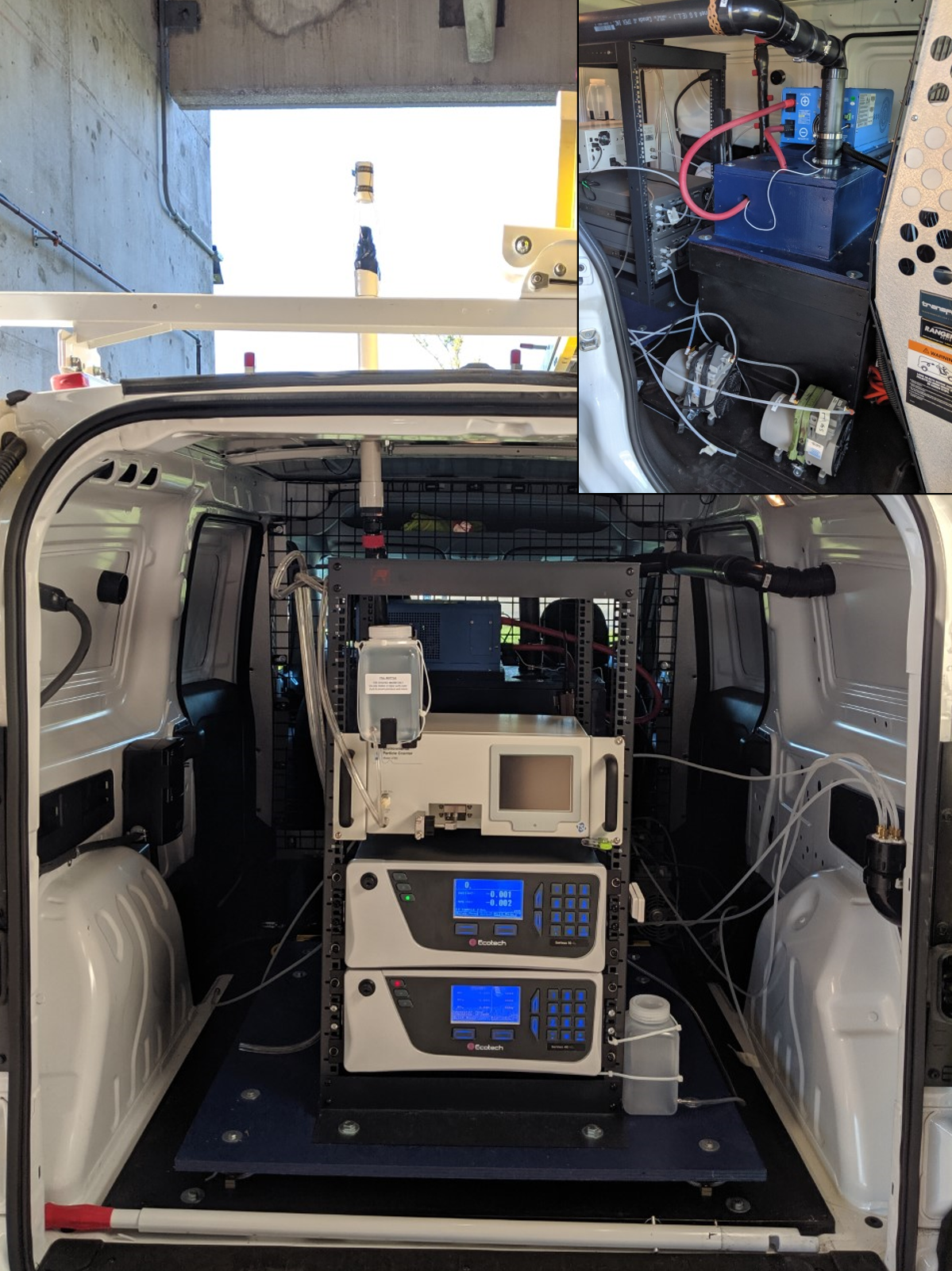RESEARCH ENDEAVOURS
i) Mobile Air Pollution Sampling
My research program before joining UTM focused on the use of mobile air pollution measurement technology to measure and model urban air quality space-time variations. This theme began during my Ph.D. and has continued in my group. Mobile measurements use air pollution monitors, but instead of the traditional approach of installing a monitor at a single location, the monitors are installed on a platform that allows movement, such as a motor vehicle or a bicycle. The challenge with data collected using this method is that data are correlated in both space and time (i.e. previous measurements are related), but they are in different locations. Thus, you have created a data set that is both incomplete in time and space; however, this type of monitoring allows flexibility in sampling design (times and locations).
In my group, we have been working to understand how the incomplete time-series effects long-term estimation and how we can complete the spatial interpolation of mobile data with this structure. During my first two years at UTM, I designed and fabricated a mobile laboratory for the measurement of urban pollutants. Our mobile laboratory is a state-of-the-art facility that can measure air pollution concentrations while both stationary and moving in-traffic. An on-board battery pack allows full-day air pollution sampling without the need for the vehicle engine to operate. The design and fabrication of the laboratory took about 300 hours and was ready for operation in June 2019. We have since travelled 1,000s of kilometres collecting air pollution observations in Ontario and Quebec.

ii) Interventions
A new line of inquiry within my research program is to examine how interventions can reduce air pollution. Reduction in air pollution emissions is a long-term challenge, which will require many intervention strategies to initially reduce peoples’ exposure while emissions are reduced through long-term strategies. Interventions can consist of many activities that may be short-term or long-term in their implementation and effects. For example, a short-term activity could include education on walking routes to school for children to avoid areas of high pollution. A long-term intervention may include government grants to prioritize electric over fossil fuel vehicle purchases. The focus on intervention strategies is motivated by the need to identify solutions to reduce exposure and emissions. Intervention strategies have demonstrated reduced health effects through reduced exposure; however, many of these studies were investigating changes in industrial processing or energy production (Henschel et al., 2012). My research group is focused on interventions related to vehicle emissions because, in developed regions, energy production is not a primary concern for current air pollution issues.
iii) Spatial Modelling
Urban air quality is a challenging phenomenon to model (estimate concentrations at unmeasured locations) because concentrations increase and decrease rapidly across space (Zwack et al., 2011). These spatial variations occur because of differences in source density (e.g. major roads), complex meteorology (urban canyon effects from buildings) and a complicated mix of sources. Traditional spatial modelling/interpolation approaches assume that observation data are available at a dense enough scale that the spatial correlation structure can be estimated, which is not possible for urban air pollution. Land use regression is a spatial interpolation approach where a statistical model associates air pollution observations with the surrounding land use information at each sample location. Land use regression has shown improvements compared to traditional spatial interpolation approaches (e.g. kriging) (Hoek et al., 2008). However, the statistical models used in land use regression were not designed for spatial data, and the data’s structure can violate the statistical model assumptions.